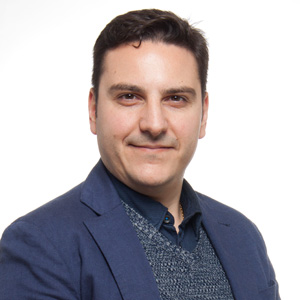Alessio Gizzi
Multiphysics modeling of nonlinear cardiac dynamics: Experiments, Theory and Simulations
VCLA hosting a talk by Alessio Gizzi
| DATE: | Thursday, July 11, 2019 |
| TIME: | 12:45 c.t. |
| VENUE: | Library 191-1 (Treitlstrasse 3, 3rd Floor) |
ABSTRACT
Complex spatiotemporal patterns of action potential duration have been shown to occur in many mammalian hearts due to a period-doubling bifurcation that develops with increasing frequency of stimulation and mechanical loading. Here, through high-resolution optical mapping and mathematical modeling, the characteristic spatial length of cardiac activity in canine ventricles are quantified via spatiotemporal correlation analyses. The study numerically investigates the role of mechanical stress in modifying the conductivity properties of cardiac tissue, and also assess the impact of these effects in the solutions generated by computational models for cardiac electromechanics. Based on a new theoretical framework of general reaction-diffusion-mechanics systems, multiphysics continuum mechanics and finite elasticity are introduced to generalize Fick’s equation. The adopted models are compared against experimental data contributing to the characterization of the observed inhomogeneity and anisotropy properties that result from mechanical deformation. Such an approach simultaneously incorporates two mechanisms for mechano-electric feedback (MEF): stretch-activated currents (SAC) and stress-assisted diffusion (SAD); also identifying their influence into the nonlinear spatiotemporal dynamics. It is found that (i) only specific combinations of the two MEF effects allow proper conduction velocity measurement; (ii) expected heterogeneities and anisotropies are obtained via the novel stress-assisted diffusion mechanisms; (iii) spiral wave meandering and drifting is highly mediated by the applied mechanical loading. The contribution further provides an analysis of the intrinsic structure of the nonlinear coupling mechanisms using computational tests conducted with ad hoc finite element methods. Static and dynamic deformation regimes are compared in the onset of cardiac arrhythmias addressing potential biomedical applications.
CONTACT
Ezio Bartocci

